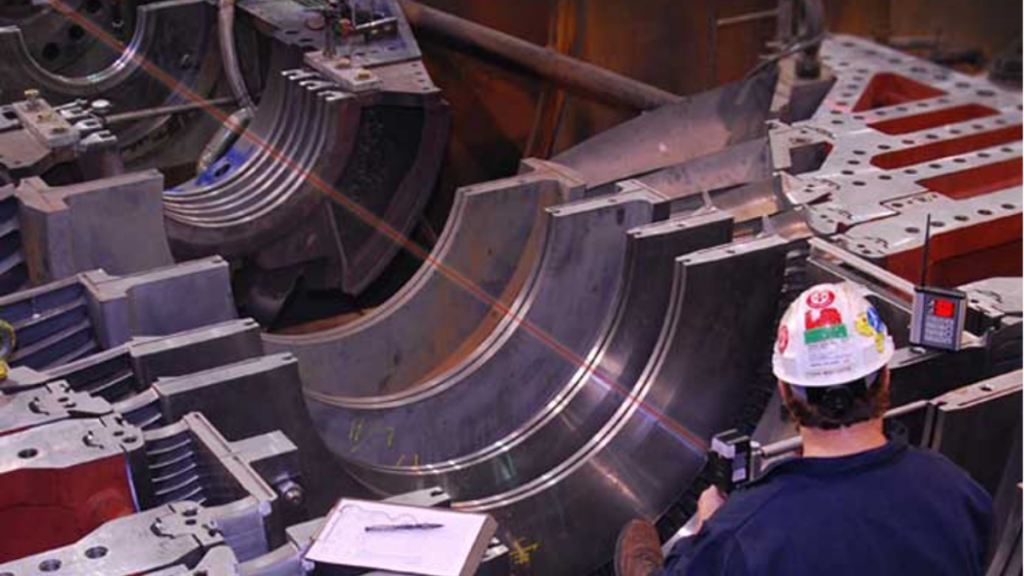Steam turbines are one of the most popular sources of energy production globally due to their high-power generation capacity. These turbines are active in different types of energy production institutions, like fossil power, combined cycle, and nuclear energy power plants.
Statistically, the steam turbine market size worldwide is expected to grow at a CAGR of 1.18% between 2020-2027 due to high demand.
During its operation, the turbine shaft generates mechanical power from steam-based thermal energy. This transforms into rotational energy inside the turbine. The generators, in particular, aid in the conversion of electricity from rotational energy.
To note, these turbines run on Carnot’s Theorem and Thermodynamics Second Law principles in most power plants. Over the years, the capacity of steam turbines has developed and re-purposed for different levels of utilization.
Industry-Centric Applications
The following are the principal uses or applications of steam turbines in various small-scale to large-scale industries.
● Chemical and pharmaceutical industries
Steam turbines are an integral part of the large-scale pharmaceutical and chemical industries. It is effective in producing measured power output at high turbine speed for different processes within the system.
Mainly, the steam turbines are capable of delivering the high demanded levels of electricity and heat during the main workflow in these industries.
● Manufacturing Industries
Steam turbines are efficient for multiple large component fabrications in manufacturing tools, processes, and machines. Moreover, other areas of its application in the context of the manufacturing industry are machining, forgings, and steel pipe fabricators and spools.
● Aerodynamic Components
The small-scale steam turbine systems are useful components for propulsion generation in aerodynamic machinery. Typically, these turbines are useful machines for airplanes, missiles, and ships.
● Lube oil System
To note, the lube oil system is necessary for providing clean and cool oil in pieces of machinery, like the gear and beatings. In general, this system constitutes a steam coil heater, reservoir, 1-2 (switchable) lube oil coolers, accumulator, lube oil pumps, gauges, pressure controls, twin filters, and temperature monitor.
In the context of steam turbine application in lube oil systems, experts notice satisfactory temperature, pressure, and flow rates.
● Waste Plants
The steam turbines have the requisite capacity to harness efficient amounts of energy from waste disposal sites. Here, the power potential is extremely high.
● Sugar Mills
Steam turbines are effective vessels for the greenhouse energy production of carbon dioxide. In sugar mills, this is achievable because of the bagasse source. Overall, steam turbine are instrumental in improving the operational sustainability and efficiency rates in sugar mills.
● Oil and Gas Industries
Steam turbines work as compressors and pump drives in multiple gas and oil industries. Its efficiency rates are suitable enough to power several of the processes in these industries at the same time.
Usage-Centric Applications
The following are the main usage-specific applications of steam turbines, which can equally accommodate different industry types.
● Heat + Power Combination
In many CHP systems, steam turbines play a crucial role in combined heat and power systems.
These components support their operation in the industrial processes, depending on the available waste fuels for the boiler to utilize securely. In CHP systems inside industries like paper mills, the steam from steam turbines gets implemented straight away.
To note, the usage of CHPs is common in paper mills because of the range of waste fuels available here, like hog fuel and black liquor.
● Combined-Cycle Power Plants
The most common application of steam turbines is the production of electricity. Here, the combined strength of high-pressure steam from steam turbines and gas turbines is used for electricity production. Compared to old-school simple-cycle power plants, combined-cycle power plants generate approximately 50% more power.
To note, this functionality is used in large-scale industrial applications in multiple global industries. Other than the high amount of power output potential, the application of steam turbines in combined-cycle power plants ensures lower costs and limited environmental risk.
● Mechanical Equipment Functioning
For many mechanical equipment parts in industries, steam turbines are efficient alternatives with consistent energy production. Typically, the equipment types in question are boiler feedwater pumps, air compressors, and refrigerator chillers.
● Power Generation
One of the main ways in which steam turbines are useful is in the context of power generation. Given its high operating speeds, vacuum control, and efficiency rates, steam turbines can deliver heavy power output continuously.
● District-Level H&C Systems
Multiple city-centric organizations utilize steam turbines in their local large-scale cooling and heating systems. Here, steam turbines occupy the space between the distribution system and the boiler. Also, some industry leaders utilize steam turbines in place of the pressure reduction station instead.
To note, steam turbines release low-pressure steam for the distribution systems converting the high-pressure steam. This enhances the overall efficiency rate of the H&C systems, compared to simple boiler operations.
Conclusion
Avail of the best-quality steam turbines for the operational improvement of your organization based on the main goals and operation. For this, depending on high-quality manufacturers and service providers for the steam turbine components is valuable.
Therefore, visit – mdaturbines.com for more information and find a range of steam turbines and services, suitable for different applications.

